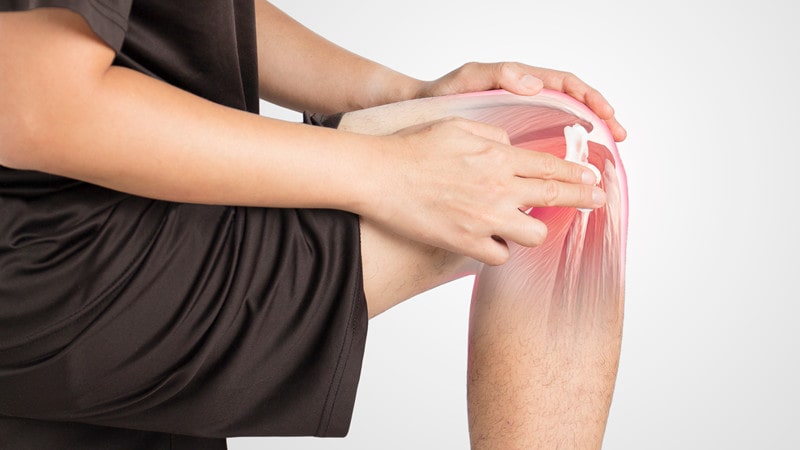Have you ever encountered a nagging pain along the inside of your thigh? There’s a good chance it might be gracilis muscle pain. The gracilis muscle, situated in the inner thigh, plays a vital role in our mobility. When this muscle gets strained or injured, the resultant pain can be distressing and interfere with daily activities.
This article aims to provide a comprehensive understanding of the gracilis muscle, the common causes of its pain, and effective techniques to alleviate it.
Understanding the Gracilis Muscle
The gracilis muscle is one of the hip adductors, which means it is responsible for drawing the leg inward and enabling the knee’s flexion. It extends from the pubic bone down to the upper medial shaft of the tibia.
Because it crosses two joints - the hip and the knee - the gracilis muscle is a critical player in walking, running, and other movements involving the legs. Injuries to this muscle can therefore significantly impact mobility and overall quality of life.
Causes of Gracilis Muscle Pain
In most cases, the root cause of gracilis muscle pain can be traced back to physical overexertion. Activities that require rapid or forceful leg adduction or sudden changes in movement, such as soccer or ballet, pose a high risk. Poor conditioning or inadequate warm-up before exercising can also increase the chances of straining the gracilis muscle.
Sedentary lifestyles can contribute to the problem as well. Extended periods of sitting can lead to muscle tightness, which may result in pain when standing or walking.
Effective Techniques for Alleviating Gracilis Muscle Pain
Rest and Ice Application
The first step to recovery is rest. The body needs time to heal, and resting the injured muscle is a crucial part of this process. Avoid activities that put strain on the gracilis muscle as much as possible. Additionally, applying an ice pack to the affected area several times a day can help reduce inflammation and alleviate pain.
Physical Therapy
Physical therapy plays a key role in the recovery process. It can help improve flexibility, strength, and mobility. Gentle stretching exercises can help lengthen the muscle, and strengthening exercises can prevent future injuries.
Heat Therapy
Once the acute phase has passed, heat therapy can be beneficial. It helps increase blood flow to the area, thereby speeding up the healing process. Applying a warm compress or using a heat pack can be helpful.
Massage Therapy
Massage therapy is another effective technique for combating gracilis muscle pain. It helps to relax the muscle, relieve tension, and increase circulation to the affected area.
Pain Management and Lifestyle Modifications
While immediate remedial techniques are essential, long-term pain management strategies and lifestyle modifications should not be overlooked. Chronic pain can often be an indicator of underlying imbalances that necessitate a broader scope of intervention.
Maintaining an active lifestyle is paramount to prevent muscle stiffness and improve overall muscle health. Incorporate low-impact exercises like swimming or cycling into your routine to strengthen your muscles without undue strain. Regularly practicing yoga or Pilates can also help increase your muscle flexibility and balance.
Proper nutrition, especially a diet rich in anti-inflammatory foods, can aid the body’s natural healing process. Foods high in omega-3 fatty acids, like fatty fish, walnuts, and flaxseeds, can help combat inflammation. Additionally, staying well-hydrated contributes to muscle health by improving circulation and reducing the likelihood of muscle cramps.
The Role of Professional Medical Interventions
When self-care techniques are not enough, it may be necessary to seek professional medical intervention. This can involve various approaches, depending on the severity of the pain and the underlying cause.
Physical therapists can provide personalized exercise regimens tailored to your specific needs and capabilities. They can guide you through safe, effective exercises to strengthen the affected muscle, improve flexibility, and restore function.
In severe cases, doctors may recommend interventions like steroid injections to reduce inflammation or surgery to repair a torn muscle. However, these approaches are typically reserved for instances where non-invasive treatments have been ineffective.
Conclusion
Managing gracilis muscle pain effectively requires a well-rounded approach. Rest, ice application, physical therapy, heat therapy, and massage therapy all play crucial roles in this process. Although the road to recovery may take some time, employing these techniques can significantly reduce pain and improve your quality of life.
Remember, it’s always recommended to consult with a healthcare professional before beginning any new treatment regimen for muscle pain. Doing so will ensure that the chosen approach is appropriate for your specific condition and that it will not exacerbate any existing health issues. With careful management and professional advice, overcoming gracilis muscle pain is entirely achievable.


